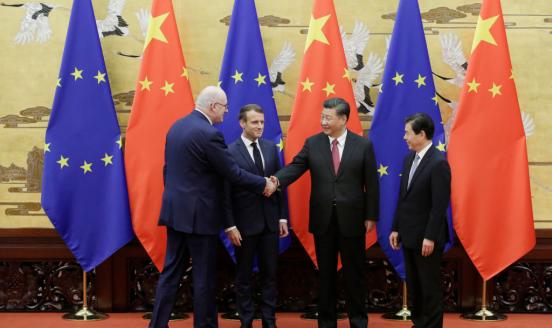China's state-owned enterprises reform still lacking bite
China has gone through a remarkable transformation in recent decades but tough reforms have become rare, especially since the global financial crisis.
This op-ed was originally published in Nikkei.

Large SOEs are known for their low efficiency, heavy debt loads and poor corporate governance. Returns on assets have been decreasing in China over the last few years and are now lower than those of most emerging economies. This could reduce the country's growth unless action is taken.
On July 26, the State Council issued new guidelines on reform of central government-owned companies. The aim is to classify SOEs into four groups -- strategic, innovative, to be consolidated and to be cleaned up -- according to their sector and to clarify the outlook for each group by 2020.
The new outline however may not provide a smooth pathway to improve efficiency or reduce moral hazard. Nor does the policy guideline necessarily mean there will be a Darwinian winnowing of unviable entities. In fact, closer examination shows that there were few references to unviable SOEs that need to disappear.
All in all, the policy outline has too few sticks and too many carrots to change the behavior of SOEs.
A reduction in the size of SOEs does not seem to be a key objective, which means that the crowding out of the private sector by the public sector looks to be here to stay. In fact, only the very small part of the SOE universe classified in the guidelines as "to be cleaned up" -- is set to shrink. This boils down to just the steel and coal industries and only accounts for 5% of total SOEs. China's overcapacity problem extends well beyond these two sectors.
Moreover, there are growing signals that Beijing will not allow further defaults by SOEs in these two sectors and that the government prefers alternatives such as injections of bank capital and debt-for-equity swaps. Consolidation is another more favored option even for industries suffering from overcapacity and marked for cleanup, as seen in the announcement Sept. 21 that Baosteel Group will merge with Wuhan Iron & Steel Group.
Not convincing
The new reforms do open the door to private capital but only for companies put in the innovation group. This is a narrower opening than what was announced at the National People's Congress session in March 2014.
Some 45% of central government SOEs have been classified as strategic by their asset size, which indicates the government will definitively retain control of a big chunk of state companies. Furthermore, no clarification has been given to the meaning of private participation as the word "control" was carefully avoided in the State Council's statement.
It will not be easy to convince private investors with such unclear guidelines. This means that more will need to be done to attract capital, especially in an environment of very low returns on assets. Unless there are further clarifications or additional sweeteners forthcoming from the government, public-private partnerships will remain sporadic.
While the cry for reform is loud, the reality is that SOE investment still supports China's economic growth. Fundamental reform would be too disruptive in the short run and long-term benefits are not the key consideration for the Chinese government now. There is indeed a trade-off between reform and short-term growth, and Beijing has made growth its priority.
Although there would be clear benefits in terms of resource allocation and an increase in returns on assets, the cost of funding for SOEs would increase if there were real restructuring. It is evident the role of the state in production will not be reduced any time soon in China. In fact, the assets of SOEs have only increased in the last few years compared with those of private companies.
The thunder of reform has been loud, but the rain has been rather light. The government continues to drag its feet on SOE reform and the liberalization of markets. The disappointing guidelines on SOE reform fall short of the needed Darwinian action to improve efficiency and returns on assets. Meanwhile, lax monetary policy will continue to feed the liquidity needs of government-owned companies, especially in overcapacity industries.
Via mergers, the consolidation process will continue but China will end up with even larger SOEs this way. Given that these mergers will be politically driven, efficiency gains cannot be expected and the companies will become much harder to manage. As SOEs become even larger, the risk of crowding out the private sector only increases. In this scenario, we should not expect returns on assets in China to increase anytime soon, to the detriment of the country's potential growth.



